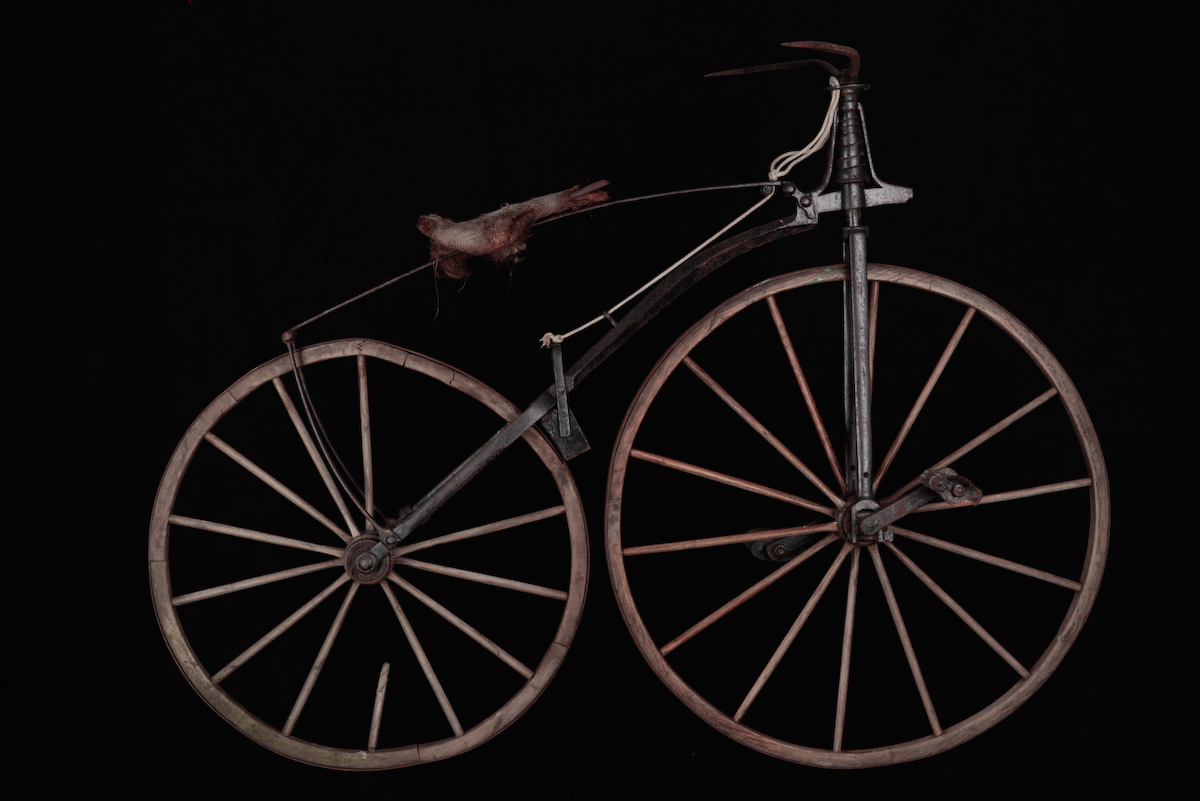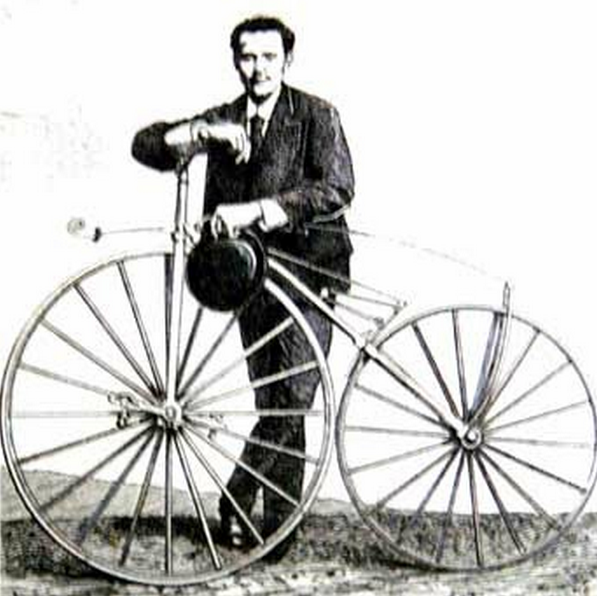Pierre Michaux on:
[Wikipedia]
[Google]
[Amazon]


 Pierre Michaux (June 25, 1813 – January 10, 1883) was a
Pierre Michaux (June 25, 1813 – January 10, 1883) was a


 Pierre Michaux (June 25, 1813 – January 10, 1883) was a
Pierre Michaux (June 25, 1813 – January 10, 1883) was a blacksmith
A blacksmith is a metalsmith who creates objects primarily from wrought iron or steel, but sometimes from #Other metals, other metals, by forging the metal, using tools to hammer, bend, and cut (cf. tinsmith). Blacksmiths produce objects such ...
who furnished parts for the carriage
A carriage is a two- or four-wheeled horse-drawn vehicle for passengers. In Europe they were a common mode of transport for the wealthy during the Roman Empire, and then again from around 1600 until they were replaced by the motor car around 1 ...
trade in Paris during the 1850s and 1860s. He may have become the inventor of the bicycle
A bicycle, also called a pedal cycle, bike, push-bike or cycle, is a human-powered transport, human-powered or motorized bicycle, motor-assisted, bicycle pedal, pedal-driven, single-track vehicle, with two bicycle wheel, wheels attached to a ...
when he added pedals to a draisine to form the Michaudine velocipede
A velocipede () is a human-powered land vehicle with one or more wheels. The most common type of velocipede today is the bicycle.
The term was probably first coined by Karl von Drais in French as ''vélocipède'' for the French translation ...
, the forerunner of the modern bicycle. However, historic sources reveal other possible claimants, such as his son Ernest Michaux and Pierre Lallement.
History
Pierre Michaux was born at Bar le Duc and worked as a blacksmith who furnished parts for the carriage trade in Paris during the 1850s and 1860s. He started building bicycles with pedals in the early 1860s. He, or his son Ernest, may have been the inventor of this machine, by adapting cranks and pedals on the front wheel of a draisine. In 1868, he formed a partnership with the Olivier brothers under his own name, Michaux et Cie ("Michaux and company"), which was the first company to mass-produce pedal-powered velocipedes, known as the Michaudine. The design was based on the previous model, the only difference being that on the bicycles of the new company the serpentine frame was made of two pieces ofcast iron
Cast iron is a class of iron–carbon alloys with a carbon content of more than 2% and silicon content around 1–3%. Its usefulness derives from its relatively low melting temperature. The alloying elements determine the form in which its car ...
bolted together, instead of wood, which made it more elegant and enabled mass-production. The wheels were made of wood and the tires made of iron, like those on horse-drawn carriages.
In 1865, a blacksmith from Lyon
Lyon (Franco-Provençal: ''Liyon'') is a city in France. It is located at the confluence of the rivers Rhône and Saône, to the northwest of the French Alps, southeast of Paris, north of Marseille, southwest of Geneva, Switzerland, north ...
named Gabert designed a variation on the frame which was of a single diagonal piece of wrought iron
Wrought iron is an iron alloy with a very low carbon content (less than 0.05%) in contrast to that of cast iron (2.1% to 4.5%), or 0.25 for low carbon "mild" steel. Wrought iron is manufactured by heating and melting high carbon cast iron in an ...
and was much stronger—by that time Pierre Lallement had emigrated to America, where he filed the only patent for the pedal bicycle.
It soon became evident that the serpentine 45 kg cast-iron frames were not sturdy enough, and with competing manufacturers already producing bicycles with the diagonal frame, the Oliviers insisted that Michaux follow suit. The partnership was dissolved in 1869, and Michaux and his company faded into oblivion as the first bicycle craze came to an end in France and the USA. Only in England did the bicycle remain popular, and England was the site of all of the next major improvements to the machine.
Michaux is often given credit for the idea of attaching pedals to the draisine, and thus for the invention of the bicycle—however, bicycle historians have stated it could have been the concept of his son Ernest, or Pierre Lallement, a carriage builder from Nancy who worked with the Olivier brothers.
Michaux died in France.
See also
*Michaux-Perreaux steam velocipede
The Michaux-Perreaux steam velocipede was a steam powered velocipede made in France some time from 1867 to 1871, when a small Louis-Guillaume Perreaux commercial steam engine was attached to a Pierre Michaux manufactured iron framed pedal bicycle. ...
Notes
References
* The Bicycle: The Myth And the Passion de Francesco Baroni (Relié - avril 2008) {{DEFAULTSORT:Michaux, Pierre 1813 births 1883 deaths People from Bar-le-Duc French blacksmiths 19th-century French businesspeople 19th-century French inventors French motorcycle designers Steam motorcycle designers 19th-century French engineers History of the motorcycle